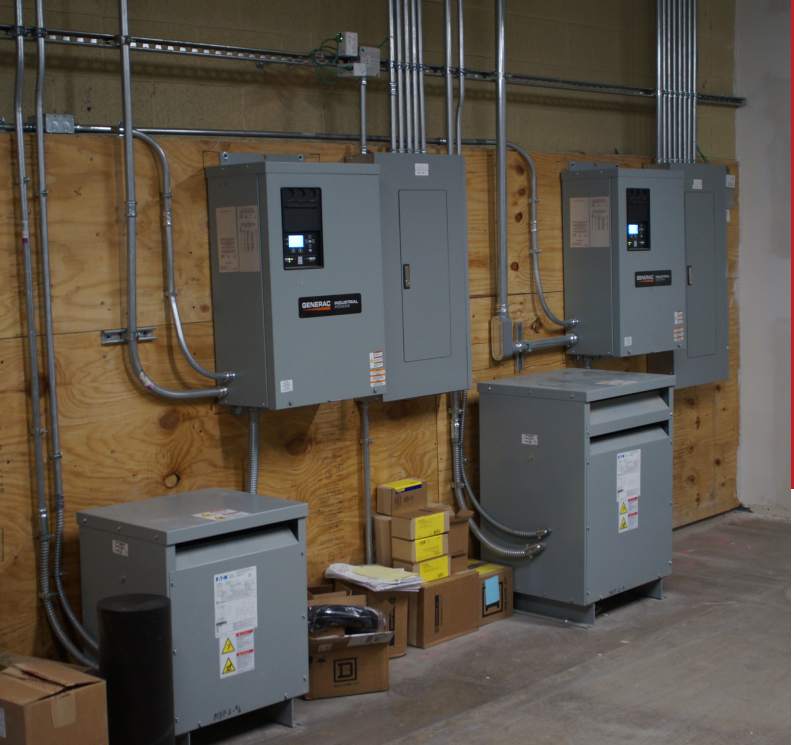Unveiling the Power of Commercial Electrical Solutions
In the dynamic landscape of commerce, a reliable and efficient electrical system is the heartbeat of your operations. Our expert team specializes in providing tailored commercial electrical solutions that power your ambitions.
Commercial Electrical
In the vast landscape of businesses, where innovation meets infrastructure, the roots of success delve deep into the realm of reliable power. At Commercial Electrical Services, we are not merely technicians; we are architects of power, builders of connectivity, and guardians of energy efficiency.

Exploring the World of Structured Cabling
Experience Seamless Communication and Reliability with Structured Cabling
- Commercial Building
- Utility and broadband
- Education and Government
- Industrial and Manufacturing
- Financial Institutions
Our assembled electrical solution is tailored to meet your specific power needs and efficiency goals. We consolidate traditionally separate electrical distribution and control equipment into one compact electrical panel that can be replicated and installed in multiple locations. The benefits of our custom electrical solution include reduced labor costs, faster installation time, minimized electrical space requirements, and reduced energy usage.

Our assembled electrical solution is tailored to meet your specific power needs and efficiency goals. We consolidate traditionally separate electrical distribution and control equipment into one compact electrical panel that can be replicated and installed in multiple locations. The benefits of our custom electrical solution include reduced labor costs, faster installation time, minimized electrical space requirements, and reduced energy usage.

Our assembled electrical solution is tailored to meet your specific power needs and efficiency goals. We consolidate traditionally separate electrical distribution and control equipment into one compact electrical panel that can be replicated and installed in multiple locations. The benefits of our custom electrical solution include reduced labor costs, faster installation time, minimized electrical space requirements, and reduced energy usage.

Our assembled electrical solution is tailored to meet your specific power needs and efficiency goals. We consolidate traditionally separate electrical distribution and control equipment into one compact electrical panel that can be replicated and installed in multiple locations. The benefits of our custom electrical solution include reduced labor costs, faster installation time, minimized electrical space requirements, and reduced energy usage.

Our assembled electrical solution is tailored to meet your specific power needs and efficiency goals. We consolidate traditionally separate electrical distribution and control equipment into one compact electrical panel that can be replicated and installed in multiple locations. The benefits of our custom electrical solution include reduced labor costs, faster installation time, minimized electrical space requirements, and reduced energy usage.

Structure Cabling FAQs
What is structured cabling?
Why is structured cabling important?
Structured cabling provides a standardized and organized infrastructure that ensures consistent and reliable performance for data, voice, and video transmission. Properly designed cabling minimizes signal loss, crosstalk, and other interference, leading to better overall network performance.
What are the components of structured cabling?
Common forms of telecommunication include wired communication (e.g., telephone lines, fiber optic cables), wireless communication (e.g., radio waves, satellite signals), internet communication (e.g., email, video conferencing), and mobile communication (e.g., cellular networks).
How does structured cabling differ from point-to-point cabling?
Common forms of telecommunication include wired communication (e.g., telephone lines, fiber optic cables), wireless communication (e.g., radio waves, satellite signals), internet communication (e.g., email, video conferencing), and mobile communication (e.g., cellular networks).
What types of cables are used in structured cabling?
Common forms of telecommunication include wired communication (e.g., telephone lines, fiber optic cables), wireless communication (e.g., radio waves, satellite signals), internet communication (e.g., email, video conferencing), and mobile communication (e.g., cellular networks).
What are the benefits of structured cabling?
Common forms of telecommunication include wired communication (e.g., telephone lines, fiber optic cables), wireless communication (e.g., radio waves, satellite signals), internet communication (e.g., email, video conferencing), and mobile communication (e.g., cellular networks).
How is structured cabling installed?
Common forms of telecommunication include wired communication (e.g., telephone lines, fiber optic cables), wireless communication (e.g., radio waves, satellite signals), internet communication (e.g., email, video conferencing), and mobile communication (e.g., cellular networks).
Can structured cabling support modern technologies like PoE and IoT?
Common forms of telecommunication include wired communication (e.g., telephone lines, fiber optic cables), wireless communication (e.g., radio waves, satellite signals), internet communication (e.g., email, video conferencing), and mobile communication (e.g., cellular networks).
What's the role of patch panels in structured cabling?
Common forms of telecommunication include wired communication (e.g., telephone lines, fiber optic cables), wireless communication (e.g., radio waves, satellite signals), internet communication (e.g., email, video conferencing), and mobile communication (e.g., cellular networks).
How is structured cabling tested and certified?
Common forms of telecommunication include wired communication (e.g., telephone lines, fiber optic cables), wireless communication (e.g., radio waves, satellite signals), internet communication (e.g., email, video conferencing), and mobile communication (e.g., cellular networks).
Our Projects
The latest from X-PERT Communication
Provides voice and data telecom services and solutions to Pennsylvania, and beyond.
X-Pert Communications, Inc. Fortifies Security with partner, Johnson Controls, at PSU Palmer Museum of Art
X-Pert Communications, Inc. is proud to announce the successful completion of a transformative security installation project at the PSU Palmer Museum of Art. Robust Security Infrastructure The security installation project at PSU Palmer Museum of Art involved the...
X-Pert Communications, Inc. Elevates Connectivity at Shaner Hotel Group Residence Inn – Hyde Park, N.Y.
X-Pert Communications, Inc. is thrilled to announce the successful completion of a comprehensive project at the Shaner Hotel Group Residence Inn in Hyde Park, N.Y. This undertaking exemplifies our commitment to delivering cutting-edge solutions in voice, data, video,...
X-Pert Communications, Inc. Delivers Cutting-Edge HALO Install Project for Bellefonte Area School District
X-Pert Communications, Inc. Delivers Cutting-Edge HALO Install Project for Bellefonte Area School District In the ever-evolving landscape of educational technology, X-Pert Communications, Inc. proudly announces the successful completion of a HALO system installation...


